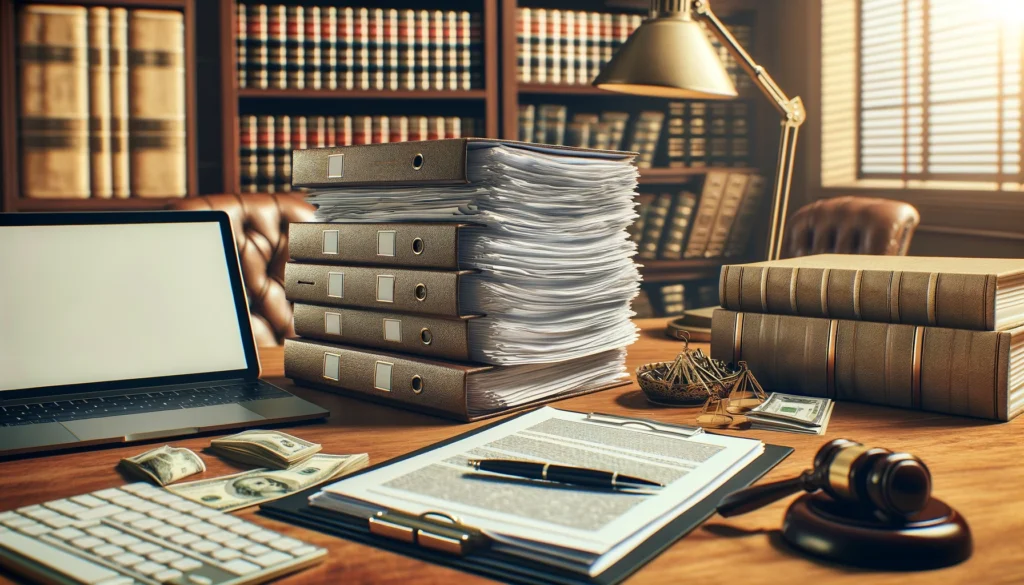
Setting the Stage: A New Era for Paralegals
Paralegals have always been the backbone of legal teams, particularly in personal injury cases where the stakes are high and the details intricate. Their role in gathering facts, conducting research, and managing documentation is indispensable. As the legal landscape evolves, one constant remains—the critical importance of legal precedents. Precedents guide decisions, paving the way for justice and ensuring consistency in the application of law.
However, navigating through mountainous volumes of case law and legal documents is no small feat. The advent of artificial intelligence (AI) introduces new possibilities. Enter ChatGPT, a tool poised to revolutionize legal research. This article explores this potential, beginning with an in-depth look at how AI like ChatGPT is changing the game.
Unlocking AI’s Potential: How ChatGPT is Reshaping Legal Research
ChatGPT, developed by OpenAI, is one of the most advanced language models available today. Trained on vast amounts of text data, it excels at understanding and generating human-like text, making it a powerful tool for various applications, including legal research.
For paralegals, this means that tasks once mired in tedium and complexity can now be streamlined and expedited. ChatGPT’s ability to quickly sift through case law, identify relevant precedents, and generate concise summaries holds immense promise. Leveraging AI enhances efficiency, allowing legal teams to focus more on strategy and less on manual research. This brings us to the critical skill of crafting effective prompts to harness AI’s potential fully.
Also read:
Crafting the Perfect Prompt: The Art and Science
To tap into ChatGPT’s capabilities, understanding what makes an effective prompt is essential. An ideal prompt is specific, clear, and contextually rich, guiding the AI to produce relevant and accurate outputs.
- Specificity: Instead of broad questions, focus on detailed aspects of the legal issue at hand. For example, “Summarize the key holdings in Smith v. Jones regarding duty of care in slip and fall cases.”
- Context: Provide background information to frame the query effectively. E.g., “In the context of personal injury law, how was ‘negligence’ interpreted in the landmark case Roe v. Wade?”
- Clarity: Use straightforward language and structure. Avoid ambiguities to prevent misleading responses.
Balancing these elements ensures that the AI understands the query’s nuances, delivering precise and useful information. Advanced prompting techniques further enhance this process, enabling even deeper dives into complex legal matters.
Also read:
Nuanced Navigation: Advanced Prompting Techniques
Elevating your prompting skills unlocks new levels of AI utility. Here, we explore advanced techniques for effective communication with ChatGPT, particularly tailored for personal injury cases.
- Layering Prompts: Break down complex queries into smaller, sequential questions.
- Initial Query: “What are the general principles of liability in personal injury law?”
- Follow-up: “How do these principles apply to car accident cases?”
- Specific Inquiry: “What were the key arguments in Jefferson v. Adams regarding contributory negligence in a car accident?”
- Contextual Prompting: Use hypotheticals to guide the AI towards relevant information.
- Example: “Assume a case where a pedestrian is injured due to a driver’s negligence. What precedents support the plaintiff’s claim for damages?”
- Referencing Case Law: Directly cite specific cases to narrow the focus.
- Example: “Analyze the ruling in Johnson v. Brown related to ‘unavoidable accident’ defenses in personal injury claims.”
Implementing these techniques ensures that the AI not only generates responses but does so with precision tailored to the specific legal context. With these tools at hand, the next critical task is summarizing information from lengthy documents effectively.
Also read:
Precision Summarization: Getting to the Core of Legal Precedents
Extracting the essence of extensive legal documents can be daunting. However, AI-driven summarization offers a solution, though it requires a strategic approach to ensure accuracy and relevance.
- Identify Key Sections: Pinpoint the most critical parts of a document—introduction, findings, and conclusion—and summarize these first.
- Use Hierarchical Summarization: Start with a high-level summary, then delve into details for each section.
- Example: “Provide a brief summary of the court’s opinion in Anderson v. Cook. Follow with detailed summaries of the key holdings.”
- Cross-Verify with Primary Texts: Always cross-check AI-generated summaries with the original text to ensure fidelity to the source material.
By following these methods, paralegals can efficiently distill lengthy documents into concise, actionable insights. Integrating these AI tools with traditional research methods ensures a comprehensive approach to legal work.
Also read:
Integrating AI Tools with Traditional Research
While AI tools like ChatGPT are powerful, they are most effective when used in conjunction with traditional research methods. Here’s how:
- Complement AI Insights with Manual Review: Use AI to gather initial insights and then validate these findings through manual research for completeness.
- Ensure Contextual Integrity: While AI can provide summaries, ensure that they are always contextualized within the broader legal framework through traditional referencing.
- Continuous Learning: Combine AI-generated information with ongoing learning and professional development to keep abreast of legal changes.
By blending the strengths of AI with established research practices, paralegals can ensure their findings are both comprehensive and reliable. Nevertheless, ethical and confidentiality considerations are paramount when using AI.
Also read:
Ethical and Confidentiality Considerations
When utilizing AI in legal research, safeguarding confidentiality and adhering to ethical standards is crucial. Always ensure:
- Confidential Data Protection: Do not input sensitive client information into AI systems without proper anonymization.
- Compliance with Legal Standards: Follow all relevant legal guidelines and ethical norms governing client data and research practices.
By maintaining these standards, you can responsibly leverage AI in legal work. Looking forward, the role of AI is set to continually evolve.
Also read:
Future Horizons: The Evolving Role of AI in Legal Work
As AI technology advances, its integration into legal practices will deepen, providing even more precise tools for research and analysis. Continual adaptation and learning will be essential for legal professionals to stay at the forefront.
By embracing these advancements, paralegals can significantly enhance their workflow efficiency, ensuring a robust and forward-thinking approach to legal research. Immediate action can yield substantial benefits.
Also read:
Practical Takeaways: Maximizing Efficiency
To leverage AI effectively, paralegals should:
- Craft detailed and context-specific prompts for precise AI responses.
- Use advanced prompting techniques to delve into complex legal issues.
- Integrate AI with traditional research methods for a thorough approach.
- Adhere to ethical standards and confidentiality requirements.
By implementing these strategies, paralegals can maximize their research efficiency and accuracy. In conclusion, the transformative potential of AI is clear.
Also read:
Closing the Case: A New Approach to Legal Precedents
AI, with tools like ChatGPT, is poised to revolutionize how legal precedents are researched and applied. By blending the strengths of AI with traditional methods, legal professionals can achieve unprecedented efficiency and efficacy.
As we navigate this new era, continuous exploration and adaptation of these tools will be essential. The future of legal research holds exciting possibilities, ready to be harnessed for the betterment of the practice.


